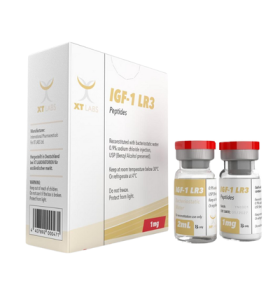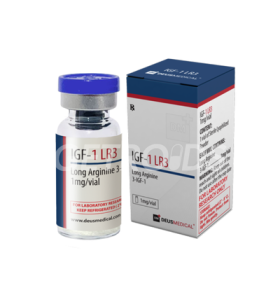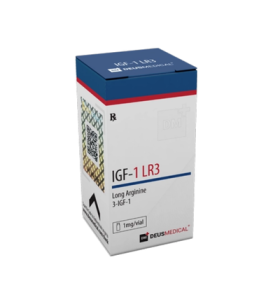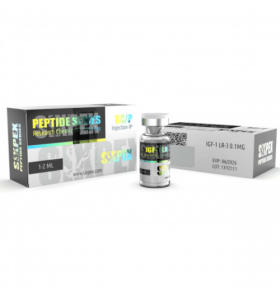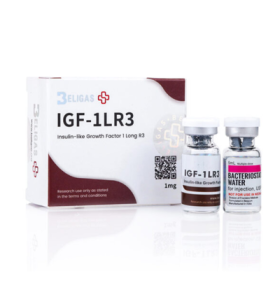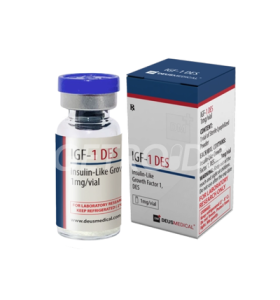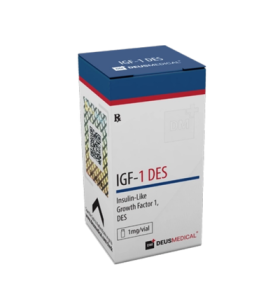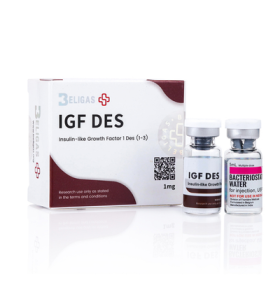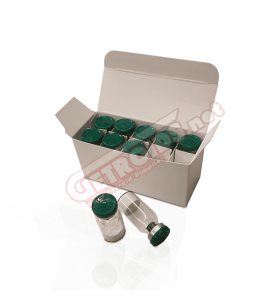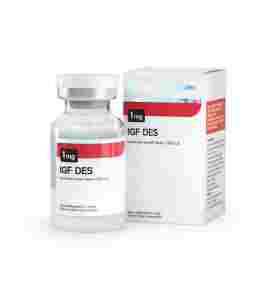Buy IGF-1 LR3 Online – Muscle Growth & Recovery Peptide | Lab-Tested
IGF-1: Insulin-like Growth Factor 1
What Is IGF-1?
IGF-1 is a hormone naturally produced by the liver in response to growth hormone (GH) stimulation. It plays a central role in promoting cell growth, muscle development, tissue repair, and metabolism regulation. Structurally similar to insulin, IGF-1 is anabolic and mitogenic, meaning it stimulates cell proliferation and regeneration.
There are different forms of IGF-1, including:
IGF-1 LR3 (Long R3) – a synthetic version with a longer half-life
IGF-1 DES(1-3) – a variant used for localized growth and rapid action
How IGF-1 Works
IGF-1 binds to its receptor (IGF1-R) on cells, activating intracellular pathways that:
Increase muscle protein synthesis
Promote cell division and regeneration
Enhance glucose uptake
Stimulate bone growth and connective tissue repair
Its effects are responsible for many of the benefits associated with growth hormone.
Key Benefits
Muscle Growth: Enhances lean mass by boosting protein synthesis and satellite cell proliferation.
Fat Reduction: Improves insulin sensitivity and may promote lipolysis.
Injury Recovery: Speeds healing of tendons, ligaments, cartilage, and nerve tissue.
Anti-Aging Effects: Supports tissue repair and cellular rejuvenation.
Bone Strength: Stimulates osteoblast activity, supporting bone density.
Common Uses
Performance enhancement (off-label)
Body recomposition (muscle gain + fat loss)
Injury rehabilitation
Anti-aging and longevity protocols
Pediatric growth disorders (clinical use)
Forms and Dosing
| Form | Half-Life | Common Dose | Use |
|---|---|---|---|
| IGF-1 LR3 | ~20–30 hours | 20–100 mcg/day, subcutaneous | Systemic muscle growth |
| IGF-1 DES(1-3) | ~20–30 minutes | 20–60 mcg/day, localized injection | Site-specific repair/growth |
Administration: Subcutaneous or intramuscular injections.
Best timing: Post-workout or in the morning, ideally during insulin-sensitive windows.
IGF-1 LR3 vs. DES
| Feature | IGF-1 LR3 | IGF-1 DES |
|---|---|---|
| Duration | Long-acting (~24 hrs) | Short-acting (~30 mins) |
| Target | Systemic | Localized growth |
| Best Use | Full-body muscle gain | Site-specific repair |
| Receptor Binding | Reduced IGF-BP affinity | High receptor affinity |
Potential Side Effects
Hypoglycemia (low blood sugar)
Joint pain, water retention
Increased appetite
Numbness/tingling
Potential growth of existing tumors (in theory, due to mitogenic activity)
High doses or long-term unsupervised use may carry risk of organomegaly (enlargement of organs) or insulin resistance.
Important Considerations
IGF-1 should be used with caution due to its potent cellular effects.
Always consider blood sugar management — some users co-administer insulin or GH (not recommended without medical oversight).
Monitor IGF-1 serum levels, blood glucose, and liver enzymes during cycles.
Conclusion
IGF-1 is one of the body’s most powerful anabolic and regenerative hormones. Whether in the form of IGF-1 LR3 for systemic growth or DES for local tissue repair, it can support muscle building, injury recovery, and anti-aging when used carefully. However, its potent biological activity requires caution, proper dosing, and monitoring.






















